Lorem ipsum dolor sit amet, consetetur adipiscing elit. Sed do eiusmod tempor incididunt ut labore et. Dolore magna aliqua. Venenatis tellus in metus vulputate eu scelerisque felis.
Roofing 101
Roofing 101

Welcome to Roofing 101 - your interactive guide through the maze of home roofing essentials. Here at Choose Your Own Roofing, we’re not just about shingles and nails; we’re about empowering you with knowledge and choices for your journey in home improvement. Just like the spine of a beloved adventure book, your roof upholds your home’s safety, air quality, and comfort against the elements. It’s more than a shield; it’s the guardian of your indoor climate, keeping mold and unseen foes at bay.
Anatomy of a Roof
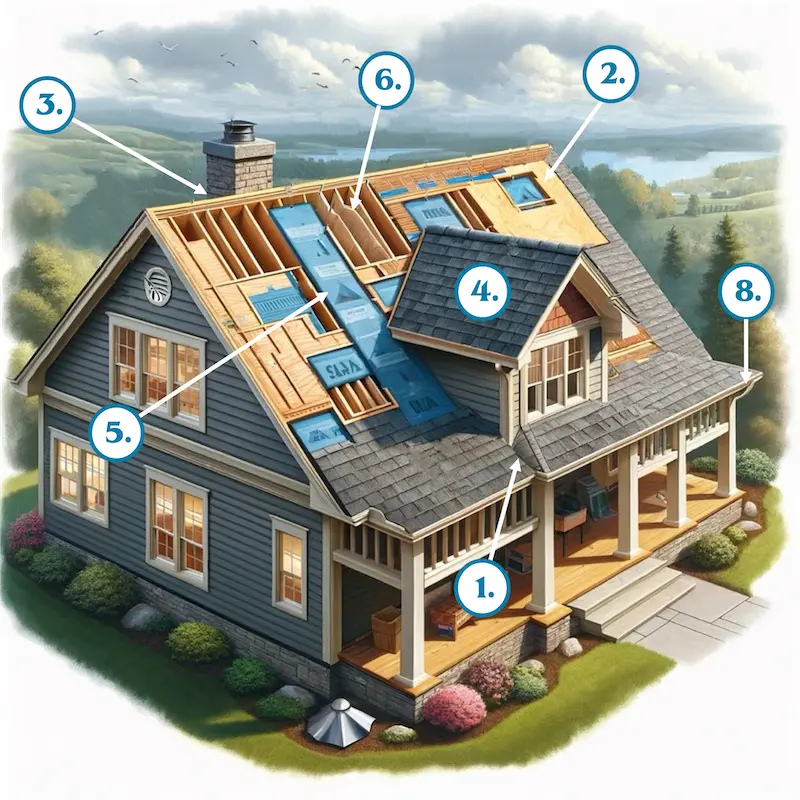
1.The area where two roof slopes meet, directing rainwater into the gutters. It’s crucial for water runoff and is often reinforced with special materials to prevent leaks.
Thin pieces of metal installed at transitions on a roof to prevent water from seeping in and causing damage. Common areas include around the chimney, skylights, and valleys.
A junction where the roof meets a vertical surface, like a wall or chimney. This area is sealed with flashing to prevent water penetration.
The outermost layer of the roof, providing the first line of defense against the elements. Shingles can be made of asphalt, wood, metal, or other materials, and are chosen for their durability, aesthetic appeal, and climate suitability.
A water-resistant or waterproof barrier material laid directly on the roof deck. It provides an extra layer of protection from water intrusion beneath the shingles.
The structural base of the roof, onto which the underlayment and shingles are installed. Usually made of plywood or oriented strand board (OSB), it supports the roof’s weight and holds everything together.
An exhaust vent located along the roof’s ridge that allows hot, humid air to escape from the attic. It’s key to a roof’s ventilation system, helping to regulate attic temperatures and moisture levels.
Channels installed around the edge of the roof to collect and direct rainwater away from the building’s foundation. Properly functioning gutters are essential for preventing soil erosion and water damage to the home’s exterior and foundation.
1.The area where two roof slopes meet, directing rainwater into the gutters. It’s crucial for water runoff and is often reinforced with special materials to prevent leaks.
Thin pieces of metal installed at transitions on a roof to prevent water from seeping in and causing damage. Common areas include around the chimney, skylights, and valleys.
A junction where the roof meets a vertical surface, like a wall or chimney. This area is sealed with flashing to prevent water penetration.
The outermost layer of the roof, providing the first line of defense against the elements. Shingles can be made of asphalt, wood, metal, or other materials, and are chosen for their durability, aesthetic appeal, and climate suitability.
A water-resistant or waterproof barrier material laid directly on the roof deck. It provides an extra layer of protection from water intrusion beneath the shingles.
The structural base of the roof, onto which the underlayment and shingles are installed. Usually made of plywood or oriented strand board (OSB), it supports the roof’s weight and holds everything together.
An exhaust vent located along the roof’s ridge that allows hot, humid air to escape from the attic. It’s key to a roof’s ventilation system, helping to regulate attic temperatures and moisture levels.
Channels installed around the edge of the roof to collect and direct rainwater away from the building’s foundation. Properly functioning gutters are essential for preventing soil erosion and water damage to the home’s exterior and foundation.
Through Choose Your Own Construction, we're not just simplifying home improvement; we're creating a movement towards a more transparent, accessible, and enjoyable journey to enhancing your home. Join us as we embark on this adventure, transforming not just roofs, but the very essence of what it means to improve, customize, and love your living space.
Signs Its Time For a Replacement
Granules in the Gutter
Algae & Moss
Curled, Cracked, or Missing Shingles
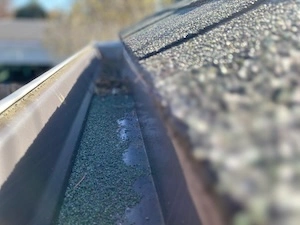
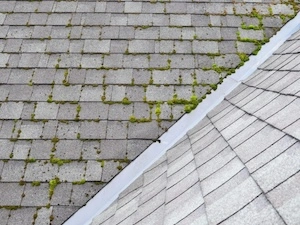
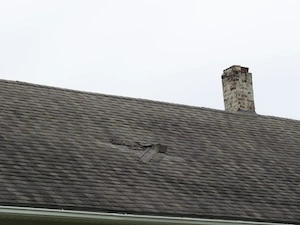
Finding granules in your gutters or downspouts is an indication that your shingles are wearing out. These granules help protect the shingles from UV damage, and losing them can accelerate roof aging.
While some moss or algae can be cosmetic, excessive growth can trap moisture against the roof surface, potentially damaging the shingles over time.
When shingles on your roof are curling, cracked, or missing, it's a clear indicator that your roof is deteriorating. This damage can compromise your home's protection from weather, leading to leaks and further structural damage. It's important to consider a roof replacement to ensure your home remains secure and weatherproof.
Sagging
Water Marks on Your Ceiling
Roof Age
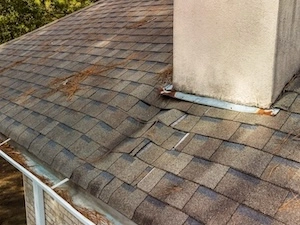
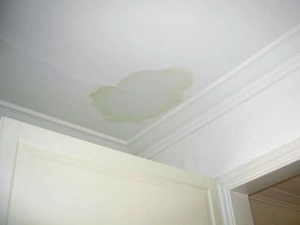
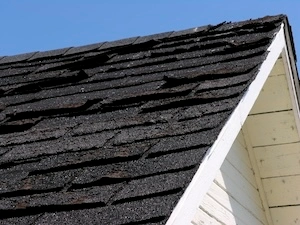
A sagging roof is a serious sign that your roof may have structural issues, such as weakened rafters or water saturation. It's important to address this issue promptly to avoid potential damage to your home.
If you notice water marks or stains on your ceiling, it's a sign of water leaking through your roof. This indicates a breach in your roof's integrity, necessitating immediate attention and likely replacement to prevent further damage to your home's interior.
If your roof is over 20 years old, it may be time for a replacement. In New England's climate, roofs typically start to show signs of wear after this time, regardless of the shingle quality.
Through Choose Your Own Construction, we're not just simplifying home improvement; we're creating a movement towards a more transparent, accessible, and enjoyable journey to enhancing your home. Join us as we embark on this adventure, transforming not just roofs, but the very essence of what it means to improve, customize, and love your living space.
Signs Its Time for a Replacement
Granules in the Gutter

Finding granules in your gutters or downspouts is an indication that your shingles are wearing out. These granules help protect the shingles from UV damage, and losing them can accelerate roof aging.
Algae & Moss

While some moss or algae can be cosmetic, excessive growth can trap moisture against the roof surface, potentially damaging the shingles over time.
Curled, Cracked, or Missing Shingles

When shingles on your roof are curling, cracked, or missing, it's a clear indicator that your roof is deteriorating. This damage can compromise your home's protection from weather, leading to leaks and further structural damage. It's important to consider a roof replacement to ensure your home remains secure and weatherproof.
Sagging

A sagging roof is a serious sign that your roof may have structural issues, such as weakened rafters or water saturation. It's important to address this issue promptly to avoid potential damage to your home.
Water Marks on Your Ceiling

If you notice water marks or stains on your ceiling, it's a sign of water leaking through your roof. This indicates a breach in your roof's integrity, necessitating immediate attention and likely replacement to prevent further damage to your home's interior.
Roof Age

If your roof is over 20 years old, it may be time for a replacement. In New England's climate, roofs typically start to show signs of wear after this time, regardless of the shingle quality.
Through Choose Your Own Construction, we're not just simplifying home improvement; we're creating a movement towards a more transparent, accessible, and enjoyable journey to enhancing your home. Join us as we embark on this adventure, transforming not just roofs, but the very essence of what it means to improve, customize, and love your living space.
Invest Smart: How to Select the Right Roofer
The Budget Option: These roofers might tempt you with the lowest quotes, but the savings often come at a cost. Typically, they may not carry insurance, offer minimal to no warranty, and the workmanship might leave much to be desired. While initially appealing to the wallet, the potential for future issues and expenses is high.


The Premium Option: On the opposite end, premium roofers promise top-notch quality and extensive warranties, but their prices can soar beyond the average budget. While the assurance of excellence is attractive, the financial stretch can be considerable.
The Choose Your Own Roofing Way
Positioned right in the middle, we offer the sweet spot between quality and affordability. Our services come with the assurance of skilled workmanship, full insurance, and a comprehensive warranty that won’t break the bank. We believe in delivering quality installation at a price that makes sense for you.

The Choose Your Own Roofing Way
Positioned right in the middle, we offer the sweet spot between quality and affordability. Our services come with the assurance of skilled workmanship, full insurance, and a comprehensive warranty that won’t break the bank. We believe in delivering quality installation at a price that makes sense for you.

Add later - carousel of Before & After
Add after - Customer Testimonials
Lorem ipsum dolor samet, auctor tconsecteturaiscing etliber auctor tconsecteu fmeui
Join over 3,000+ customers who love it!
John DoeEnvironmental Economist
Lorem ipsum dolor sit amet, consetetur adipiscing elit. Sed do eiusmod tempor incididunt ut labore et. Dolore magna aliqua. Venenatis tellus in metus vulputate eu scelerisque felis.
Henry HarryHealthcare Social Worker
Lorem ipsum dolor sit amet, consetetur adipiscing elit. Sed do eiusmod tempor incididunt ut labore et. Dolore magna aliqua. Venenatis tellus in metus vulputate eu scelerisque felis.
Tom JaksonLogistician
Lorem ipsum dolor sit amet, consetetur adipiscing elit. Sed do eiusmod tempor incididunt ut labore et. Dolore magna aliqua. Venenatis tellus in metus vulputate eu scelerisque felis.
Tomasz Treflerzan Customer


